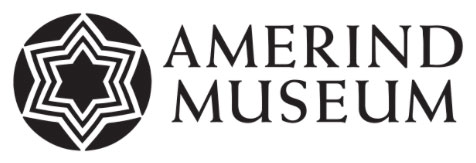Amerind History
History
The Amerind Foundation was founded in 1937 by William Shirley Fulton (1880-1964) as a private, nonprofit archaeological research institution. A native of Connecticut, Fulton became interested in archaeology as a young man. Several trips to Arizona between 1906 and 1917 captured his attention in the Southwest’s past and present Native cultures. Throughout the 1920s Fulton regularly traveled west from his New England home, heading into the southwestern mountains, canyons, and plateau country to explore for archaeological ruins and expand his Native American collections.
On one of his visits he heard of Texas Canyon with its rugged vistas and rumors of prehistoric agricultural villages. Fulton purchased the property for his FF Ranch (later the Amerind Foundation) in 1930. After building a home amid the boulder formations of Texas Canyon in 1931, Fulton soon found his annual trips to the Southwest began lasting months instead of weeks, and he soon started excavating sites on his ranch property. What began as an avocation grew rapidly into a full-time passion. As his techniques improved, he began publishing accounts of his excavations in a series of Archaeological Notes published by the Museum of the American Indian in New York. With the incorporation of the Amerind Foundation in 1937, Fulton hired a professional archaeologist and began supporting archaeological research on a major scale.
Fulton believed that one of the few means of interpreting ancient cultures was through the collection and preservation of their surviving material remains. He also believed that contemporary Indian cultures could help to interpret the past, but that many native traditions were rapidly disappearing under the influences of the modern world.
These beliefs were central to Fulton’s own studies, to his active support of other archaeologists, and why he created one of the finest private museum collections of ethnographic and archaeological materials in North America. The years from 1937 witnessed the expansion of the Amerind facility as the Museum, Library, Art Gallery (primarily Mrs. Fulton’s contribution), laboratories, storage, workshops, and staff housing were constructed.
In 1948, Fulton hired Amerind’s first professional director, a newly minted PhD from the University of Arizona named Charles C. Di Peso, who would become one of the Southwest’s premier archaeologists. Di Peso’s tenure at the Amerind spanned 30 years and included pioneering excavations at nearly a dozen sites in the Southwestern borderlands of southern Arizona, southwestern New Mexico, and northern Mexico. He is best remembered for his ground breaking work at Paquimé in northern Chihuahua. Between 1959 and 1962, the Amerind Foundation collaborated with the Mexican Institute for Anthropology and History (INAH) to conduct intensive excavations at Paquimé, one of the largest ancient sites in the greater Southwest, and in 1974 Di Peso published a massive eight volume report on the excavations—still one of the most comprehensive archaeological site reports in the history of southwest research.
By any measure, Di Peso’s most important contribution to historical research was to help erase the arbitrary line formed by the international border between Mexico and the United States. Southwestern archaeologists always knew that the cultural region they studied extended well south of the US-Mexico border, but apart from some extensive surveys, very little work was accomplished in northern Mexico. Mexican archaeologists focused most of their attention on the great Mesoamerican sites of central and southern Mexico, and American archaeologists were busy excavating sites north of the border. Few paid more than passing attention to Mexico’s northern frontier. Di Peso and a handful of like-minded colleagues argued that to understand the prehistory of the southwestern US, we needed to fill the blank space on the map of northern Mexico. For Di Peso, the term Southwest was a parochialism. Arizona and New Mexico were really the northwestern frontier of Mesoamerica, and much of Di Peso’s research in the Southwest borderlands was designed to demonstrate a point that most archaeologists now take for granted.
Throughout its history, Amerind has continued to pursue archaeological research that contributes significantly to our knowledge of the Southwest Borderlands. Although Amerind, at this point, is no longer engaged in archaeological excavations, we contribute to the field by hosting two to five advanced seminars each year, bringing together archaeologists, anthropologists, and other scholars to discuss, debate, and synthesize work on various anthropological topics. Proceedings from the seminars are published each year by the University of Arizona Press in a series entitled, Amerind Studies in Anthropology.
